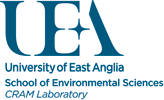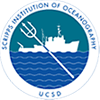
|
GOLLUM
Global Oxygen Laboratories Link Ultra-precise Measurements
|

|
APO, or Atmospheric Potential Oxygen, is a tracer conservative with respect to land biospheric carbon and oxygen exchanges [Stephens et al., 1998], which can be used to gain valuable insight into, and provide constraints, on a wide range of biogeochemical applications [Keeling and Manning, 2014; Ishidoya et al., 2012; Nevison et al., 2012; Tohjima et al., 2012; Rödenbeck et al., 2008; Battle et al., 2006; Gruber et al., 2001; Keeling et al., 1998].
o The first APO Workshop was held in 2004, at the Max Planck Institute for Biogeochemistry, Jena, Germany, hosted by Martin Heimann. Eleven years passed until the second APO Workshop, held at the Scripps Institution of Oceanography, La Jolla, California, U.S.A., over 3 days from 18-20 September, 2015, hosted by Ralph Keeling. There were 28 oral presentations given, and much engaging, lively discussion amongst the 33 participants.
The goal of the APO Workshop was to bring together members of both the modelling and observational communities to discuss topics related to APO, such as how to use APO data to improve understanding of ocean biogeochemical processes and carbon cycling. The meeting addressed both observational needs and methods, as well as applications. We hope that new research endeavours and new collaborations will bear fruit as a result of the Workshop.
Below you can find links to the Workshop abstracts, agenda, and PDFs of the presentations.
References:
Battle, M., S. Mikaloff Fletcher, M. L. Bender, R. F. Keeling, A. C. Manning, N. Gruber, P. P. Tans, M. B. Hendricks, D. T. Ho, C. Simonds, R. Mika, and B. Paplawsky, Atmospheric potential oxygen: New observations and their implications for some atmospheric and oceanic models, Global Biogeochemical Cycles, 20, doi:10.1029/2005GB002534, 2006.
Gruber, N., M. Gloor, S.-M. Fan, and J. L. Sarmiento, Air-sea flux of oxygen estimated from bulk data: Implications for the marine and atmospheric oxygen cycles, Global Biogeochemical Cycles, 15 (4), 783-803, 2001.
Ishidoya, S., S. Morimoto, S. Aoki, S. Taguchi, D. Goto, S. Murayama, and T. Nakazawa, Oceanic and terrestrial biospheric CO2 uptake estimated from atmospheric potential oxygen observed at Ny-Ålesund, Svalbard, and Syowa, Antarctica, Tellus Series B-Chemical and Physical Meteorology, 64, doi:10.3402/tellusb.v64i0.18924, 2012.
Keeling, R. F., and A. C. Manning, 5.15 - Studies of Recent Changes in Atmospheric O2 Content, in Treatise on Geochemistry (Second Edition), edited by Holland, H. D., and K. K. Turekian, pp. 385-404, Elsevier, Oxford, 2014.
Keeling, R. F., B. B. Stephens, R. G. Najjar, S. C. Doney, D. Archer, and M. Heimann, Seasonal variations in the atmospheric O2/N2 ratio in relation to the kinetics of air-sea gas exchange, Global Biogeochemical Cycles, 12 (1), 141-163, 1998.
Nevison, C. D., R. F. Keeling, M. Kahru, M. Manizza, B. G. Mitchell, and N. Cassar, Estimating net community production in the Southern Ocean based on atmospheric potential oxygen and satellite ocean color data, Global Biogeochemical Cycles, 26, doi:10.1029/2011gb004040, 2012.
Rödenbeck, C., C. Le Quere, M. Heimann, and R. F. Keeling, Interannual variability in oceanic biogeochemical processes inferred by inversion of atmospheric O2/N2 and CO2 data, Tellus Series B-Chemical and Physical Meteorology, 60 (5), 685-705, doi:10.1111/j.1600-0889.2008.00375.x, 2008.
Stephens, B. B., R. F. Keeling, M. Heimann, K. D. Six, R. Murnane, and K. Caldeira, Testing global ocean carbon cycle models using measurements of atmospheric O2 and CO2 concentration, Global Biogeochemical Cycles, 12 (2), 213-230, doi:10.1029/97GB03500, 1998.
Tohjima, Y., C. Minejima, H. Mukai, T. Machida, H. Yamagishi, and Y. Nojiri, Analysis of seasonality and annual mean distribution of atmospheric potential oxygen (APO) in the Pacific region, Global Biogeochemical Cycles, 26, doi:10.1029/2011gb004110, 2012.